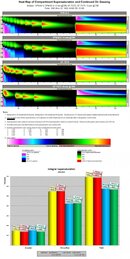victorzamora
Contributor
there's no obligation not to lengthen the deco on both the deep end (by a few minutes through deep stops on back gas) and then compensate on the shallow end with a modest GF high of 70 or even 60.
I believe that this issue has been addressed before, but I simply don't get why you would add deco time deep to then compensate for it shallow. It just seems unnecessary and counter to logic.
As for NEDU adding time at 70ft, that was on Air. I'm sure that a 70ft stop on EAN50, on a different profile than what the NEDU study ran, is a very different scenario and the depth of the stop isn't indicative of them being equivalent in concept.






